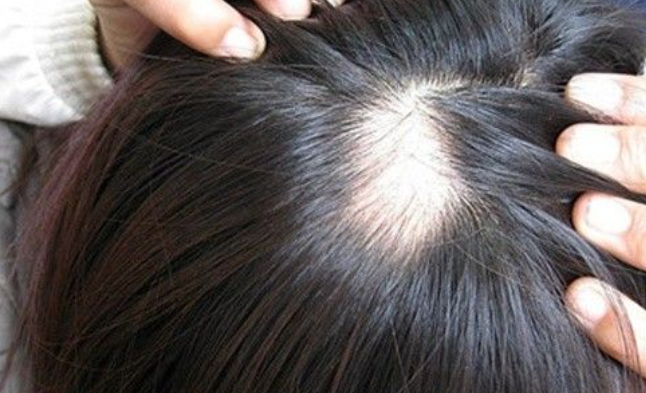
Anagen Scalp
7 Sept 2025
Alopecia Areata is more than a hair loss condition—it’s a complex, immune-mediated experience that often begins with sudden bald spots.
Alopecia Areata is more than a hair loss condition—it’s a complex, immune-mediated experience that often begins with sudden bald spots. This article explores the causes of these patches, what underlies the condition, and practical strategies you can take. We’ll also highlight promising treatments, including advanced therapies like JAK inhibitors, and make a careful medical comparison of options.
This article also links internally to our Plasma Scalp Boost hair-loss treatment for complementary options, and refers externally to the authoritative NIH/NIAMS overview on alopecia areata for further credibility.
What Is Alopecia Areata and Why Bald Spots Form
Alopecia Areata is an autoimmune, non-scarring form of hair loss that typically begins in small, round patches—often about the size of a coin.
These bald spots appear because the body's immune system mistakenly attacks hair follicles, particularly during the anagen (growth) phase, causing them to prematurely enter a resting (telogen) state and ultimately shed.
In medical terms, hair follicles usually enjoy "immune privilege"—a sort of protection from immune attack. In this condition, that protection is lost.
Genetic predisposition plays a significant role; many linked loci involve immune regulation and hair cycle control.
External factors—like psychological stress, illness, infections, or environmental triggers—may act on this genetic background to precipitate bald spots.
Table: Key Triggers and Mechanisms Behind Bald Spots in Alopecia Areata
Factor | Role in Bald Spot Formation |
Autoimmunity | Immune attack on hair follicles—primary driver |
Loss of immune privilege | Hair follicles become vulnerable to immune-mediated damage |
Genetic predisposition | Immune and follicle-growth genes increase susceptibility |
Triggering events | Stress, illness, environmental factors can precipitate flares |
Thus, Alopecia Areata bald spots arise through a combination of immune dysfunction, genetic risk, and often a triggering event—all converging to damage the hair growth cycle.
Common Patterns & Types of Alopecia Areata Bald Spots

Beyond individual patches, Alopecia Areata can present in different patterns—knowing these helps set realistic expectations:
Patchy Alopecia Areata – the most common form, featuring discrete round patches on the scalp or body.
Alopecia Totalis – complete scalp hair loss.
Alopecia Universalis – loss of all body hair, including eyebrows and eyelashes.
Symptoms and clinical signs of bald spots include:
Smooth, round, non‑scarring patches.
“Exclamation‑point” hairs: tapering hairs that thin near the scalp.
“Black dots” or short broken hairs in follicular opening.
Nail pitting or dents may accompany hair loss.
Although many bald spots can resolve within months, unpredictable cycles of loss and regrowth are common.
What You Can Do—Medical Treatments, Support, and Strategies
Dealing with Alopecia Areata bald spots often requires a multifaceted plan. Here’s what you can consider:
Medical Treatments
Corticosteroids:
Intralesional steroid injections are common for small patches.
Topical or oral steroids may help but have systemic side-effects.
Topical Minoxidil:
Promotes regrowth; 5% solution has shown better results vs placebo.
JAK inhibitors (e.g. baricitinib, deuruxolitinib, ruxolitinib):
Emerging effective systemic treatment offering real hope, especially for severe or extensive bald spots.
Other options:
Contact immunotherapy, anthralin, or combination regimens may be considered in resistant cases.
Supportive & Cosmetic Strategies
Wigs, hairpieces, eyebrow stencils, or extensions can help during regrowth phases
Psychological support, such as counseling, support groups, or trusted communities like the National Alopecia Areata Foundation (NAAF) can improve well-being.
Complementary Treatment: Plasma Scalp Boost
As an internal resource, our Plasma Scalp Boost hair-loss treatment may complement medical approaches by nourishing follicles and improving scalp health—ideal alongside medical therapies.
Summary at a Glance
Alopecia Areata leads to bald spots because of immune attacks on hair follicles, loss of their immune privilege, and genetic and environmental triggers.
Bald spots commonly present in discrete patches, but can progress to broader forms like alopecia totalis or universalis.
Treatment options range from corticosteroids and minoxidil to promising JAK inhibitors—plus supportive cosmetic and emotional support strategies.
The Plasma Scalp Boost can serve as an adjunctive option for those seeking comprehensive scalp care.
For further detailed and trusted information, the NIH/NIAMS provides a comprehensive medical overview on alopecia areata: see their official resource https://www.niams.nih.gov/health-topics/alopecia-areata

